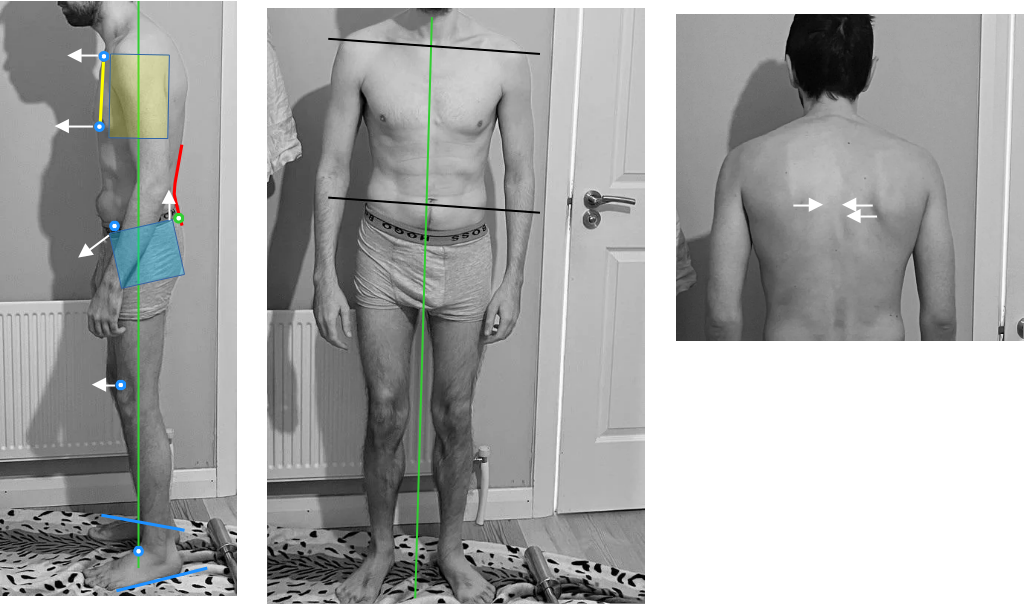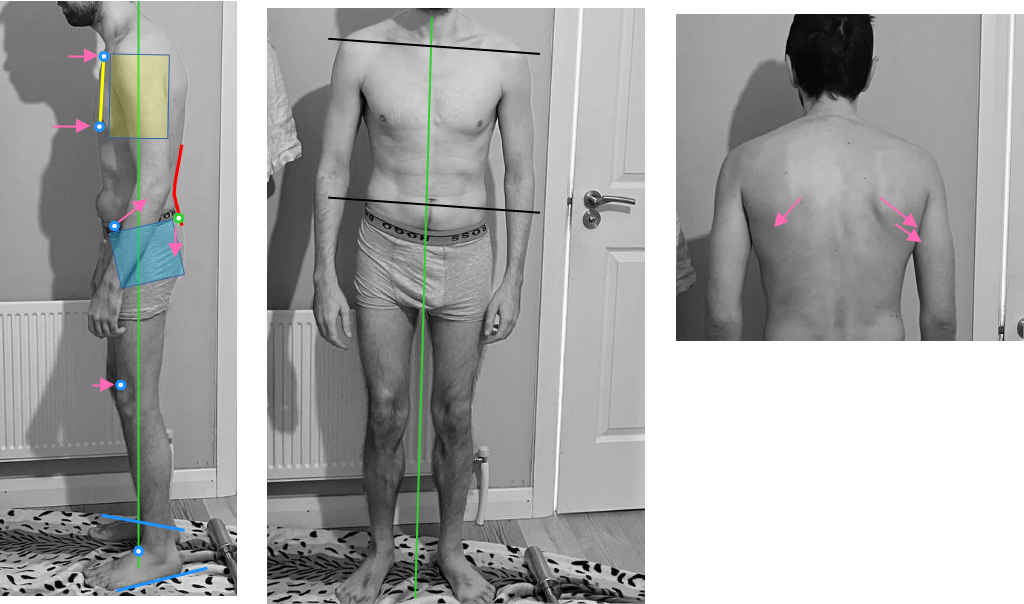Assessment context and image originals from this thread: https://www.reddit.com/r/PostureAssesments/comments/15aia9c/3_years_bedchair_ridden_trying_to_stand_again/
Hi Flat-Insurance2280,
thanks again for sharing your images and your story.
In my opinion, this is what I think was the sequence of events in the past:
Prior to the stroke, you have been pretty healthy with a reasonably well coordinated mechanism of your torso. Probably not perfect, but much better compared to most. There would have been however some habits of movement back than that were not correct. Not a big deal for a healthy person.
Fast forward 3 years after effectively not moving at all (or very little compared to normal active life). Your muscles have atrophied your fascias would have shortened due to being slack for so long. If fascia isn't continuously stressed, it creates bonds / adhesions and shortens.
Jeando Masoero is talking about exactly the same issue you are having with patients who have been bedridden for too long in one of his interviews with Kevin. Apparently, for many it's like learning to walk from scratch.
Learning conscious guidance and control would be really useful for you.
Even F.M. Alexander had a stroke late in his life and recovered very well using his skills.

Ok, so what we see is feet placed in wrong position for standing. We would like the blue lines parallel. Toes more in, heels more apart.
Also, you are habitually placing your left foot in front of the right. It's on every image. That's where your left / right imbalances (twists) through out the body start.
Your knees are released forward (not in full extension). Your ankles are released too.
There is a slight anterior pelvic tilt. The white arrows indicate which part moves where. So the illiac in the front (blue marker @ waist height). is being pulled forward and down. The sacrum (green spot) is being pulled up. These two movements rotate the blue pelvis fwd and down at the front.
The position of your upper torso (ribcage) is in a very different position to the common folk. You are doing linear translation of you ribcage forwards, but there is very little rotation (that's good). That's why your sternum is near vertical. Also the position of your arms is very reasonably placed forward (most people would retract).
You pulling your right arm more back than your left. Hence the raised shoulder and scapula sticking out at the back.
There is also a twist in your pelvis, that goes hand in hand with one of the feet forward.
Just looking at you like this, I can almost see how your posture used to be pretty good. And now, as if there is just no strength in the system to keep you up.
All the blue spots would need to be on the green plumb line to get better organisation of your torso.
Deliberately moving the markers in the direction of the pink arrows would start adjusting your mechanism to the more advantageous position.
The process of ordering these new movements would be doing two things (that you need) at the same time: It would start engaging the atrophied muscles in antagonistic pulls, effectively training them up again, and you would also start stretching the glued up fascia in your legs and back.
Purely out of curiosity, when you have been posing for these images to be taken, how much effort was it?
